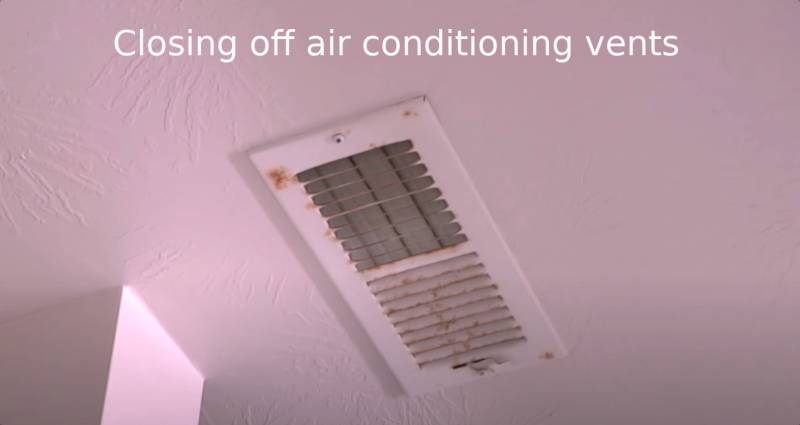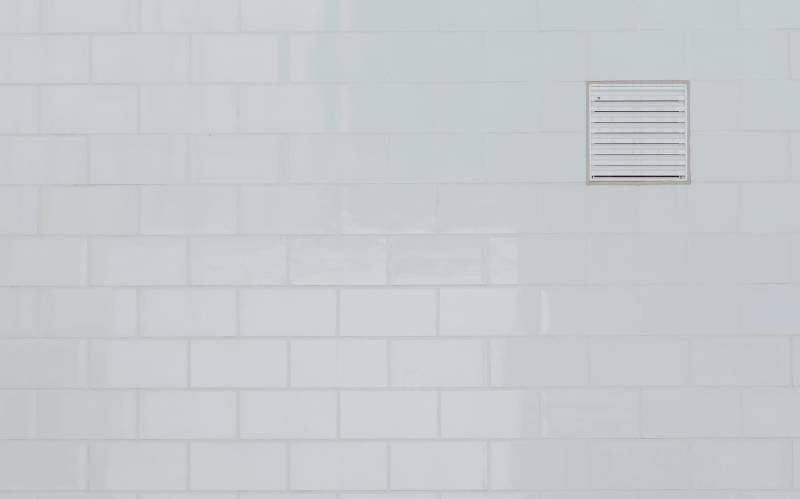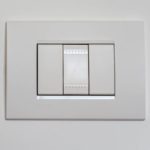Table of Contents
A reliable air conditioner is essential to all homes. This is because it brings comfort and helps to maintain the ideal level of temperature and moisture in your home or office.

An air conditioner cannot function alone as it needs air conditioning vents to operate optimally. The air conditioning vents help to maintain your home’s air pressure and preserve the quality of air.
However, if you have some rooms in your home that don’t need ventilation, you can close off the air conditioning vents in those rooms. In this post, we’re going to show you how to close off aircon vents.
Should I Keep Air Conditioner Vents Open or closed?
Air conditioning vents can be installed on the walls or ceilings to filter out the debris entering your space. They come in different shapes and sizes as per your requirement and they potentially save you some additional expenses. If you want to close air conditioning vents just to save money, then you might be making the wrong decision. To understand it, you need to know the working of the air conditioning vents.
They absorb moisture and heat from your home space and these tiny opening play a crucial role in this. But if you decide to block these openings then the airflow will be clogged and moisture will build up in your living space, and eventually, the room temperature will be affected badly. Overall, the idea of blocking or closing the air conditioning vents is not feasible as your room temperature will be messed with extensive humidity.
Procedure for closing off aircon vents in your home:
Step 1: Preparation
Put a ladder or stool under the aircon vent that you want to close off. If you’re using a ladder, ensure that it’s in a locked position to avoid falling over or collapsing.
Step up on the ladder and ensure you can access the air vent comfortably. If not, adjust the ladder or get a taller stool.
Step 2: Identify the vent type
You can now easily close off the air conditioning vent. However, you should start by identifying which type of vent you have. There are usually three types of air conditioning vents – round, rectangular, or square vents.
If the air vent is rectangular, you will close it by turning off the switch. The switch can be located on the left or right-hand side. Round or square vents, usually, come with a dial in the middle.
Step 3: Check the vent fins
After identifying the type of vent and locating its dial/switch, the next step is to close off the vent. For the rectangular air vent, move the switch down to close it. While for the round or square vent, turn the dial to the left to close it.
Check and see if the air vent fins are fully closed. If they are still passing air even after closing, move on to the next step. Most air vent fins do not form a perfect seal, but they reduce the flow of air significantly. If you want to block an air vent completely, you may have to use tape, silicone caulk, a piece of plywood, or plastic sheeting.
Step 4: Seal the vents
Start by using duct tape to close off the air vent completely. Follow the procedure above and seal the air vents completely by attaching tape to all the air vent fins.
However, it’s worth noting that duct tape is ineffective as it won’t last very long. The strong air will slowly push off the duct tape, and you may be forced to put on new tape after a short while.
Step 5: Silicone caulk
If you want something more reliable, you should try out a bead of silicone caulk. This is great for an air vent that leaks air into the house even when closed. To apply silicone caulk, you must switch off the air conditioning system.
Next, remove the vent grille cover and lay a 1/8-inch thick bead of silicone caulk around the perimeter of the grille cover. When you’re done, screw the cover back and give it at least 12 hours before turning on the air conditioning system.
Step 6: Permanent block
If the tape and silicone caulk is not doing the job well, you can decide to use a sheet of plastic or a piece of plywood to block the air permanently. Using a plastic sheet or a piece of plywood is quite cumbersome.
This is because you will have to measure and cut wood or plastic according to your air vent grille dimensions. To make the plywood or plastic sheet stick on the air vent grille, you will have to apply duct tape. The job is done.
Using plywood or plastic sheet is more effective than using duct tape or silicone caulk alone. But if you don’t mind some air getting into your room, you can only close the air vent using the switch or dial.
Note that blocking too many vents can reduce the efficiency of your heating system or even shorten the life of its parts. As a result, it’s only advised to close off less than a quarter to a third of your air conditioning vents.
Do Closing Air Vents Have Any Effects?
Yes, it does. Closing your air vents completely has several effects on your air conditioning system. So, before you close half of your air vents in the house, it’s also important to know the consequences that might follow. These are as follows:
Prohibits Proper Airflow
Having normal airflow in your home or office is very crucial. This is because the airflow through the HVAC system is what propels heating and cooling to all corners of your home.
Many people are very familiar with this process as that’s what they are told when they buy air conditioners.

Nevertheless, many people may not be familiar with the airflow that returns through the system.
The air that comes into a room and the return airflow are normally based on a calculated pressure that keeps the air conditioning system operating steadily and efficiently. As a result, your home maintains effective heating and cooling sequence.
Increase Energy Bill
One of the misconceptions that people have is that if they close the air vents, the energy bill will reduce. This is wrong as the AC or furnace will continue to work at the same rate.
Nonetheless, air pressure will increase, which will force itself out of the system through leaks.
In the end, you will put excess pressure on your system, which will mean a shortened lifespan. Also, the increased pressure may overwork the unit and cause an increased energy bill instead of reducing it.
Damages Air Conditioning System
When you decide to close off or block air vent grilles, this means you’re changing the pressure in the house. HVAC systems are usually created to heat homes based on their size. Therefore, closing some air vents will lead to increased pressure which will cause more stress to your AC or furnace.
Since you will be overworking your AC, it will become ineffective and won’t last long. Apart from that, the AC will be damaged after a short period.
So, the small amount that you save on not cooling or heating a room may end up costing you a lot. You may have to repair or even replace the AC after a short period.
Will I Save Energy When I Partially Close Air Conditioning Vents?
Even though it’s not recommended to close all air vents in your home or office, you can partially close a few air vents. Note that you should only close air vents that are far from your air conditioning system and furnace.
Partially closed air vents still allow air to flow through properly via the HVAC system, which avoids overheating and increased pressure on the ductwork.
How do Air Conditioning Vents Affect HVAC
Air conditioning vents have a mix of good and bad effects on the heating, cooling, and duct systems. However, if you have decided to close these vents then the air pressure will build up leading to restriction of the duct system. Consequently, you’ll have to spend more money than you’d expected to save.
Conclusion
With this guide, closing off your air conditioning vent shouldn’t be a problem at all. Make sure to follow it to the latter.
Besides, you should also assemble the right tools if you want to close them off completely and prevent any slight air from entering your room.
However, you should keep in mind the precautions to take to avoid putting excess pressure on your air conditioning system.
You don’t want to end up damaging it or worsening your home’s air temperature and quality.








